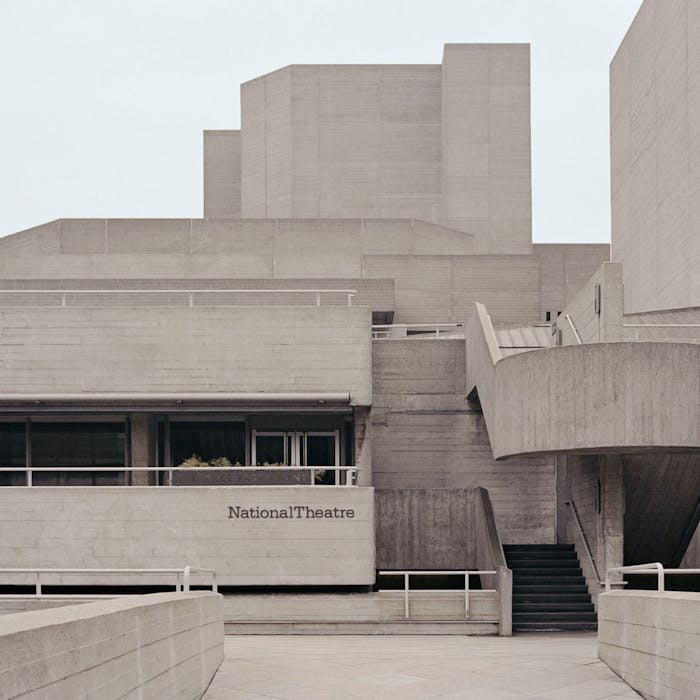
The Royal National Theatre: 70's Brutalism on the South Bank
The National Theatre, situated in London’s South Bank arts complex, is one of Britain’s most iconic examples of Brutalist architecture. Built in 1976, it consists of a layered concrete landscape that Prince Charles has described as being like a ‘nuclear power station’.
It is known to divide public opinion, having been voted in the top five of both the most hated and the most loved British buildings.
The National Theatre was designed by architect Denys Lasdun. He was appointed to the project to give Britain an official national theatrical 'home' in 1963. Despite having no experience in theatre design, he persuaded the board of theatre directors, designers and technical experts to give him the job with no team, but on a ‘standalone’ basis – which founder and first Artistic Director Sir Laurence Olivier described as ‘very theatrical’. Lasdun designed it with the concept of ‘architecture as urban landscape’ in mind.
The National Theatre took 13 years to build, with two years spent on the main amphitheatre itself. Lasdun described the project as ‘a political football’ with ‘a very troubled passage’.
The first production in the Brutalist building was Peter Hall’s production of Hamlet, with Albert Finney in the leading role, and opened on 16th March 1976.
Further reading
Links to external websites are not maintained by Bite Sized Britain. They are provided to give users access to additional information. Bite Sized Britain is not responsible for the content of these external websites.
